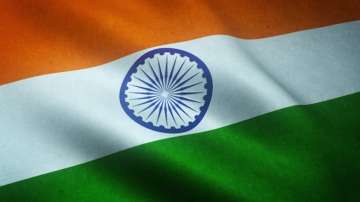Republic Day 2023: How the national tricolour evolved from 1906 to 1947
During the British Raj and after India attained freedom, the Indian tricolour, as it stands now, underwent major changes in design.

Republic Day 2023: The national flag, as it stands today, was not always like this. The colour and design of the Indian flag have gone major changes from 1906 till 1947, when the official flag was adopted by the Constituent Assembly. As we celebrate Republic Day 2023, let's look at the stages of the national flag and how the tricolour came to be the emblem of the country. This piece of trivia will also interest the kids and teach them about the freedom struggle of India.
The unofficial flag of India in 1906
The first national flag in India is said to have been hoisted on August 7, 1906, in the Parsee Bagan Square (Green Park) in Kolkata. The flag was composed of three horizontal strips of red, yellow and green. There were 8 lotus flowers on the top red stripe and sun and moon on either sides of the green stripe. Vande Mataram was written in the middle.
The Berlin committee flag in 1907
The second flag was hoisted in Paris by Madame Cama and her band of exiled revolutionaries in 1907. The colours were orange, yellow and green, from top to bottom. The top strip had only one lotus but seven stars denoting the Saptarishi. At the bottom strip was a sun and a moon with a star over it. This flag representing India was also exhibited at a conference in Berlin. Vande Mataram was written in the middle.
The Home Rule movement flag in 1917
The third flag went up in 1917 when India's political struggle had taken a definite turn. Dr Annie Besant and Lokmanya Tilak hoisted it during the Home rule movement. This flag had five red and four green horizontal strips arranged alternately, with seven stars in the saptarishi configuration super-imposed on them. In the left-hand top corner (the pole end) was the Union Jack. There was also a white crescent and star in one corner.
Read: Republic Day 2023: Tricolour paneer tikka to tiranga idli, easy recipes that you can cook in no time
The flag unofficially adopted in 1921
During the session of the All India Congress Committee at Vijaywada in 1921 an Andhra-based youth prepared a flag and took it to Mahatma Gandhi. It was made up of two colours-red and green-representing the two major communities i.e. Hindus and Muslims. The top strip was white in colour. Gandhi suggested the addition of the white strip to represent the remaining communities of India and the spinning wheel to symbolise progress of the country.
The flag adopted in 1931
A resolution was passed in 1931 that adopted a tricolor flag as the national flag of India. This flag was saffron, white and green with Mahatma Gandhi's spinning wheel at the center, representing the progress and self-reliance of the nation. The flag also had no communal connotations like the previous one.
Read: Republic Day 2023: Rang De Basanti to URI, list of Bollywood movies you must watch
Tricolour flag of India
On July 22, 1947, the Constituent Assembly adopted it as Free India National Flag. After the Independence, the colours and their significance remained the same. In place of the spinning wheel, the Dharma Charkha of Emperor Asoka was placed in the centre. Thus, the tricolour flag of India came to be.